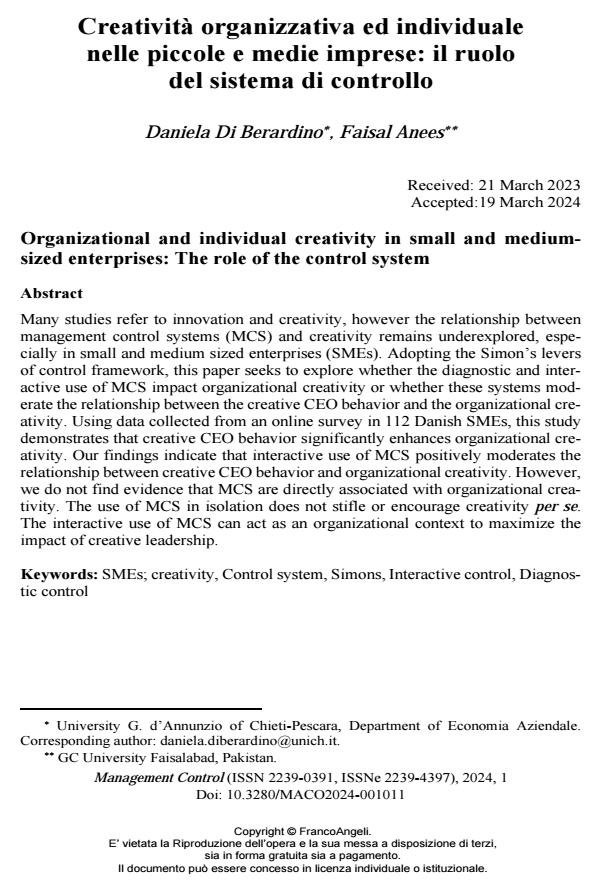Organizational and individual creativity in small and mediumsized enterprises: The role of the control system
Journal title MANAGEMENT CONTROL
Author/s Daniela Di Berardino, Faisal Anees
Publishing Year 2024 Issue 2024/1
Language Italian Pages 23 P. 227-249 File size 259 KB
DOI 10.3280/MACO2024-001011
DOI is like a bar code for intellectual property: to have more infomation
click here
Below, you can see the article first page
If you want to buy this article in PDF format, you can do it, following the instructions to buy download credits

FrancoAngeli is member of Publishers International Linking Association, Inc (PILA), a not-for-profit association which run the CrossRef service enabling links to and from online scholarly content.
Many studies refer to innovation and creativity, however the relationship between management control systems (MCS) and creativity remains underexplored, espe-cially in small and medium sized enterprises (SMEs). Adopting the Simon’s levers of control framework, this paper seeks to explore whether the diagnostic and inter-active use of MCS impact organizational creativity or whether these systems moderate the relationship between the creative CEO behavior and the organiza-tional creativity. Using data collected from an online survey in 112 Danish SMEs, this study demonstrates that creative CEO behavior significantly enhances organi-zational creativity. Our findings indicate that interactive use of MCS positively moderates the relationship between creative CEO behavior and organizational creativity. However, we do not find evidence that MCS are directly associated with organizational creativity. The use of MCS in isolation does not stifle or encourage creativity per se. The interactive use of MCS can act as an organizational context to maximize the impact of creative leadership.
Keywords: SMEs; creativity, Control system, Simons, Interactive control, Diag-nostic control
Daniela Di Berardino, Faisal Anees, Creatività organizzativa ed individuale nelle piccole e medie imprese: il ruolo del sistema di controllo in "MANAGEMENT CONTROL" 1/2024, pp 227-249, DOI: 10.3280/MACO2024-001011